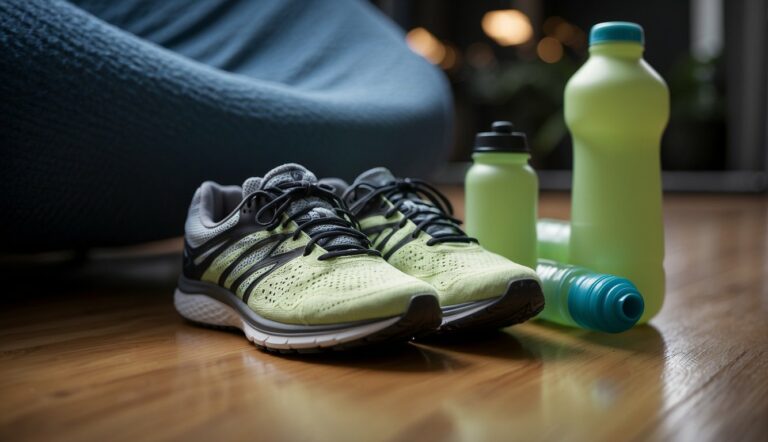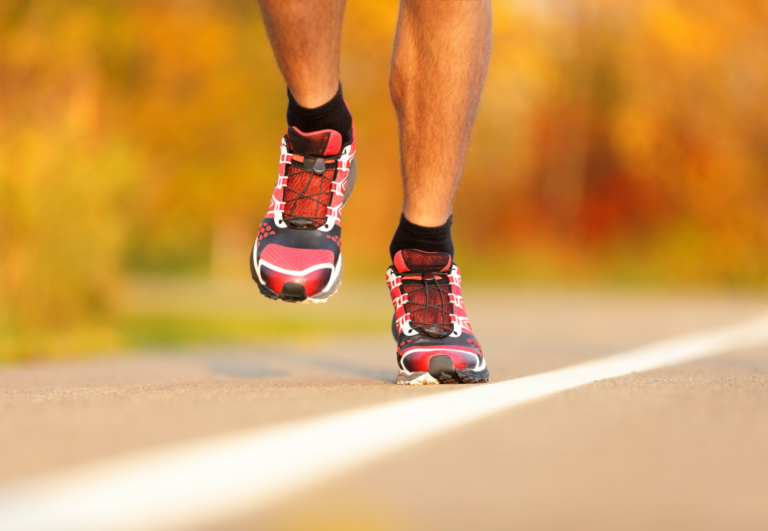Pre-Run Stretching Routines for Injury Prevention: Essential Warm-Up Tips!
Engaging in a pre-run stretching routine is essential for preventing injuries and enhancing your running performance. By preparing your muscles before a run, you significantly reduce the risk of strains and other running-related injuries. Starting with dynamic stretches, which mirror the movements of running, helps increase blood flow to your muscle groups and improves your range of motion.
To get the most out of your running, it’s crucial to target the key muscle groups involved. Your stretch routine should focus on the hamstrings, calves, hip flexors, and quadriceps. These stretches will not only support injury prevention but also contribute to better running efficiency and performance.
Adopting a consistent pre-run stretching routine primes your body for the demands of running. It readies the muscles by making them more pliable and less prone to tears or other injuries. This preparation lays the groundwork for a safer and more productive workout, allowing you to focus on achieving your running goals.
Lower Body Stretches for Injury Prevention
Incorporating lower body stretches into your pre-run routine can help prevent injury by improving the flexibility and mobility of your muscles and joints. Focusing on hip flexors, hamstrings, quadriceps, calves, and glute muscles not only primes your body for the run but can enhance overall performance.
Hip Flexor Stretch
To target your hip flexors, start by kneeling on your right knee with your left foot in front for a deep lunge position. Shift your weight forward until you feel a stretch in the front of your right hip.
Hold this for 30 seconds, then switch sides. This stretch aids in preventing tightness in the hip area, which is crucial for maintaining proper running form.
Hamstring Stretch
Your hamstrings play a significant role in leg movement while running. Ease into a hamstring stretch by placing your right heel on a low step or curb. Flex your foot and gently lean forward from your hips until you feel a stretch in the back of your thigh.
Hold for 30 seconds before switching to your left leg. Consistent hamstring stretching can prevent strains and contribute to joint health.

Quadriceps Stretch
For your quadriceps, stand on one foot, grab the other foot with the hand on the same side, and gently pull it towards your glutes. Keep your knees together and your back straight. Holding on to something for balance may help.
Aim for a 30-second stretch per leg. This stretch can help maintain flexibility and reduce the risk of injury in your upper legs.
Calf Stretch
To stretch your calves, stand at arm’s length from a wall and step one foot back, keeping it flat on the ground. Lean into the wall until you feel a stretch in the back leg’s calf. Hold for 30 seconds, then switch legs.
Adequate calf stretching can prevent Achilles tendonitis and enhance ankle flexibility.

Leg Swings
Prepare your hip abductors and adductors with leg swings. Holding onto a stable object for support, swing one leg forward and backward, then side to side, for 30 seconds. Repeat with the other leg. This dynamic stretch increases blood flow and prepares your muscles for the movements they’ll make during your run.
Butt Kicks
Perform butt kicks by lightly jogging in place while trying to kick your heels up to touch your glutes. Continue for 30 seconds to warm up your quadriceps and glutes. This dynamic activity helps boost your heart rate and enhances the coordination of your lower body muscles.
These stretches target different muscle groups in your legs and hips, promoting flexibility and reducing the chances of injury. By following these steps, you’ll be adequately prepared for a safer and more effective running experience.
Upper Body & Core Activation and Stretches for Injury Prevention
Before starting your run, it’s crucial to activate and stretch your upper body and core to prevent injuries. This routine targets your shoulders, upper back, and core stabilizing muscles, preparing them for the physical activity ahead.
Arm Circles
To target your shoulders and improve mobility, begin with arm circles. Stand with your feet shoulder-width apart, extend your arms to the sides at shoulder height, and rotate them in small circles. Gradually increase the size of the circles for 30 seconds, then switch and rotate in the opposite direction. This motion helps to warm up the shoulder joints and prepares the upper back muscles for movement.
Dynamic Chest Stretch
To enhance flexibility in your chest and shoulders, perform a dynamic chest stretch. Interlace your fingers behind your back, straighten your arms, and lift them gently away from your body. Hold this for a few seconds, releasing and repeating. Not only does this stretch your chest and shoulders, but it also involves the core stabilizing muscles as you maintain balance.
Torso Twists
Engage your core with torso twists. Stand with your feet hip-width apart and your knees slightly bent. Cross your arms over your chest, and rotate your upper body to the right, then to the left, keeping your hips facing forward. This movement activates your core stabilizing muscles and the muscles along your spine, essential for maintaining posture during your run.
Side Bends
Perform side bends to stretch the muscles along the sides of your body. Stand with feet hip-width apart, raise your arms overhead, and gently lean to one side, then the other, feeling a stretch along your torso. This action targets the obliques and helps maintain lateral flexibility, reducing the risk of side stitches.
High Knees
Initiate your core and lower body with high knees. Stand tall, and lift one knee toward your chest, then alternate with the other knee. Increase the pace to make it more dynamic, and use your arm swings to maintain rhythm. High knees prime your hip flexors and core muscles, necessary for a strong running form.
Planks
Planks are excellent for activating your entire core. Lie face down, then prop yourself up on your elbows and toes, keeping your body in a straight line from head to heels. Hold for 30 seconds, making sure not to let your hips sag or rise. This exercise strengthens the core stabilizing muscles, which support your spine and pelvis during running.
Inchworms
Inchworms are a full-body exercise that improves flexibility in the hamstrings and lower back while activating the core. Stand with feet hip-width apart, hinge at the waist to touch your toes, then walk your hands forward until you’re in a plank position. Walk your feet towards your hands and stand up. Repeat this several times to enhance the blood flow to all muscles used in running.
Why is Pre-Run Stretching Important?
Effective pre-run stretching prepares your muscles and joints for the activity ahead, enhancing your performance and reducing the risk of injury. By incorporating a balanced stretching routine, you give your body the necessary mobility for running.
Importance of Warm-Up
Warming up gradually increases your heart rate and body temperature, which in turn enhances blood flow to your muscles. This preparation is critical since warm muscles with an efficient blood supply are less prone to injuries. A proper warm-up, consisting of active movements, primes the body’s muscles and tendons for the demands of running, increasing both flexibility and range of motion.
- Benefits of warm-up include:
- Reduced risk of injury
- Increased muscle and joint flexibility
- Improved range of motion

Static vs Dynamic Stretching
Static stretching involves holding a stretch in a still position, whereas dynamic stretching encompasses active movements with controlled swings and stretches that mimic running mechanics. Before a run, dynamic movements are preferred as they prepare the body for the impact and the diverse range of movements involved in running, contributing to better muscle performance and joint mobility.
| Stretching Type | When to Use | Benefits |
|---|---|---|
| Static | Post-run | Improves overall flexibility |
| Dynamic | Pre-run | Enhances muscular performance and reduces risk of injury |
Inclusion of dynamic stretching in your pre-run routine promotes a better transition to the running motion, preparing your muscles for the type of activity they are about to engage in, and it is essential for a well-rounded preparation to hit the pavement or trails.
Injury Prevention Strategies
Effective injury prevention through pre-run stretching and post-run recovery practices is essential to maintain and enhance your running performance. By focusing on proper running technique and recovery methods, you’ll help prevent injuries and ensure a more enjoyable and enduring running experience.
Running Technique Tips
Your running form is crucial for injury prevention. Here are key aspects to focus on:
- Stride Length and Foot Placement: Keep your stride comfortable and natural, not too long, to avoid overstraining. Your feet should land directly under your body to maintain balance and coordination.
- Endurance and Functional Training: Work with a running coach or personal trainer to incorporate exercises that improve endurance and functional strength, targeting muscles used in running.
Post-Run Recovery Practices
After a training session, your body needs to recover:
- Cool Down and Stretching: A cool-down phase gradually decreases heart rate and includes post-run stretches to alleviate muscle stiffness and soreness. Dedicate time for stretches focusing on calves, hamstrings, and hip flexors.
- Recovery Tools and Techniques: Utilize techniques such as foam rolling to release lactic acid buildup and improve muscle recovery. Consistent practice helps in maintaining flexibility and reducing the risk of injury.
By following these guidelines, you’re well on your way to a safer and more rewarding running routine.






